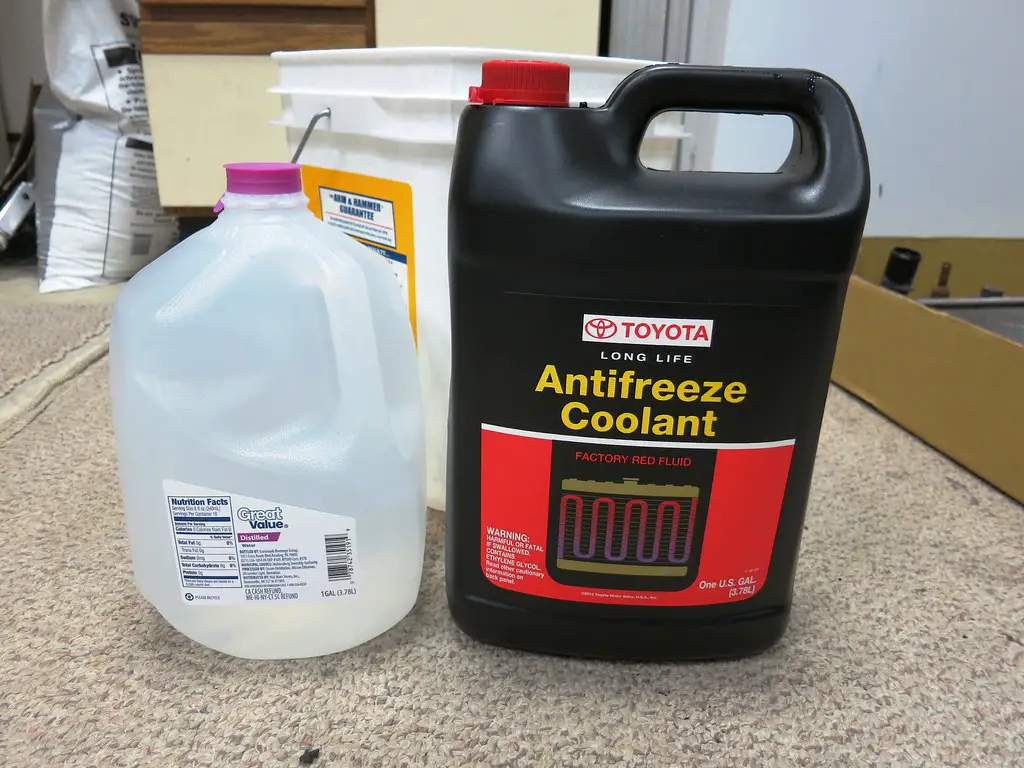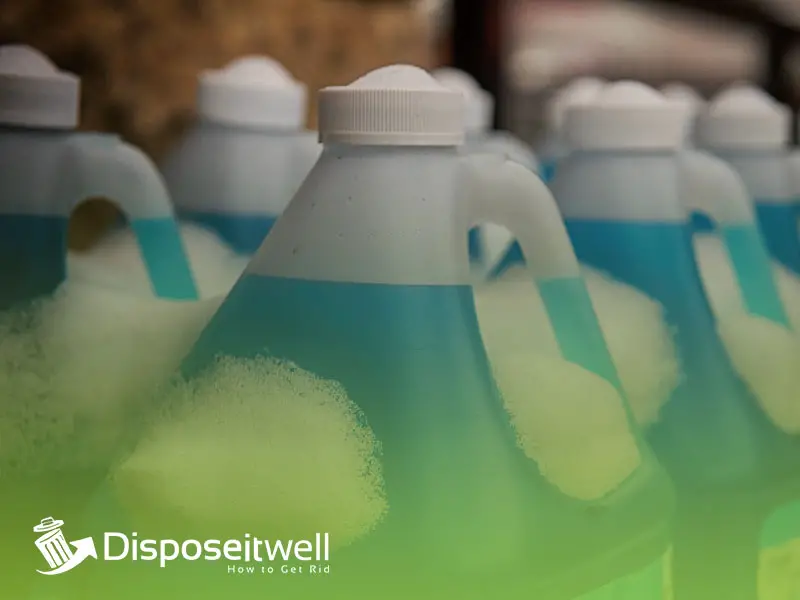How To Dispose Of Antifreeze?
Antifreeze, a substance commonly used in automobiles to regulate the engine’s temperature is composed of harmful chemicals that can pose risks to both humans and the environment if not properly disposed of.
This article aims to provide guidance on the safe and eco-friendly disposal of antifreeze. It will delve into the characteristics of antifreeze, the hazards it poses, the legal framework governing its disposal, and practical advice on how to handle and recycle it.
By the end of this blog post, you will have a thorough grasp of the measures required to dispose of antifreeze in a responsible and secure manner.
Why is Antifreeze Toxic?
Antifreeze’s toxicity is due to the existence of glycol, an alcoholic compound that can cause severe harm to the central nervous system, kidneys, and liver when ingested in significant amounts.
Ethylene glycol is the most frequently employed glycol in antifreeze and is characterized by being colorless, with a sweet taste and no odor. The sweetness of this compound makes it enticing to children and animals, magnifying the toxic effects. Proper disposal of antifreeze is crucial in preventing harm.
Types of Antifreeze
Antifreeze comes in various forms, including ethylene glycol and propylene glycol.
Ethylene glycol is the most extensively employed and is particularly effective in low temperatures. Although ethylene glycol antifreeze is usually tinted green, blue, or yellow, it is also the most hazardous and can cause severe harm if consumed, necessitating careful handling and disposal.
In contrast, propylene glycol antifreeze is less toxic than ethylene glycol antifreeze and more expensive, yet it is frequently utilized in applications where toxicity is a concern, such as in food processing and medical equipment. Propylene glycol antifreeze is typically orange or pink in color.
How To Drain Antifreeze?

Safety Precautions when disposing of Antifreeze
When engaging in the disposal of antifreeze, it is imperative that one adopts safety measures to safeguard themselves, their pets, and the environment. To this end, outlined below are some safety measures to observe when disposing of antifreeze.
- Wear protective clothing
When handling antifreeze, it is advisable to wear protective clothing such as gloves, long sleeves, and pants. By so doing, skin contact and exposure to the toxic chemicals inherent in the antifreeze can be averted. In the event that antifreeze comes into contact with one’s skin, the affected area should be thoroughly washed with soap and water immediately. If there are open wounds, it is paramount to avoid contact with antifreeze altogether.
- Keep away from pets and children
Given that antifreeze has a sweet taste that may be attractive to pets and children, it is crucial to store it out of their reach. This will prevent accidental ingestion. If, however, one suspects that their pet has ingested antifreeze, contacting a veterinarian immediately would be prudent.
- Dispose of antifreeze properly
Disposing of antifreeze in the appropriate manner is key to environmental preservation. Dumping antifreeze down the drain, on the ground, or in the trash is not advisable. Instead, recycling, taking it to a service center, or using a hazardous waste disposal service would be a more sustainable option.
Antifreeze Disposal Methods
Gather necessary materials
To dispose of antifreeze properly, gather the necessary materials such as a container that is specifically designed for antifreeze disposal. This could be obtained from a local recycling center or automotive store.
- Locate the drain plug
You need to find the drain plug on the radiator. It is usually situated on the bottom of the radiator, but the exact location may vary depending on the make and model of the vehicle. Make sure the engine has cooled down before draining the antifreeze.
- Position the container
Place the container underneath the drain plug. Ensure it’s large enough to hold all of the antifreeze you will be draining. You may want to place a large piece of cardboard or a drip pan under the container to catch any spills.
- Drain the antifreeze
With your gloves and safety goggles on, remove the drain plug and let the antifreeze drain out. It may take a few minutes for all of the fluid to empty out, so be patient.
- Collect the antifreeze
Once all of the antifreeze has been drained, collect it in the container. Put the lid on tightly and label it as “used antifreeze.” Be sure to store it in a safe place away from children and pets.
You can then take the container of used antifreeze to a recycling center or hazardous waste disposal facility. Do not pour it down the drain or into the trash, as it can be harmful to the environment.
Note!
It is also important to remember to clean up any spills or drips with rags or absorbent material and dispose of them properly. Additionally, be sure to follow any local or state regulations for the disposal of hazardous materials.

Angie’s List
How To Dispose of Antifreeze?
The first step is to check your local regulations to see if there are any specific guidelines or laws that you need to follow. Once you’ve done that, you can drain the antifreeze from your car’s engine and store it in a sealed container that is clearly labeled as used antifreeze. In the next step, you’ll need to locate a recycling center that accepts used antifreeze.
Many cities and towns have hazardous waste disposal centers that will accept antifreeze. When transporting the used antifreeze, make sure to secure it in your vehicle to prevent spills. Finally, bring the used antifreeze to the recycling center and follow their instructions for dropping it off.
Why it is Important To Dispose of Antifreeze Safely?
It is important to dispose of antifreeze safely because it contains toxic chemicals that can be harmful to humans and the environment. Antifreeze can be lethal if ingested, especially for children and pets, and can contaminate soil and waterways if not disposed of properly.
By disposing of antifreeze at a recycling center, you can help prevent these harmful effects and protect both human health and the environment. Recycling centers can often reprocess antifreeze or dispose of it in a way that is safe and environmentally friendly.
Things Not To Do While Disposing of Antifreeze

Dumping into lawn
Neither your lawn nor any other area of land should be contaminated with antifreeze. This can cause the toxic chemicals in the antifreeze to seep into the soil, potentially harming plant life and contaminating the groundwater.
Pouring it down your drain
Never pour antifreeze down the drain. Antifreeze can harm the pipes in your home and can contaminate the water supply, which can be dangerous for both humans and the environment.
FAQs
Does antifreeze evaporate?
Yes, antifreeze can evaporate under certain conditions. The rate at which antifreeze evaporates depends on various factors, such as temperature, humidity, and the surface area of the liquid. At higher temperatures and lower humidity, antifreeze can evaporate more quickly. In addition, if the antifreeze is exposed to air or has a large surface area, it can also evaporate more rapidly.
It is important to note that inhaling antifreeze vapors can be harmful to human health, so it is important to handle it with care and in a well-ventilated area.
Can you reuse antifreeze?
Yes, antifreeze can be reused as long as it is still in good condition and has not come into contact with any contaminants. It is important to follow the manufacturer’s instructions for testing, draining, and refilling antifreeze.
How long does antifreeze last?
So, how long does antifreeze last? Well, it depends on the type of antifreeze and a bunch of other factors, like how often you drive and how well you take care of your car. Generally, regular antifreeze should be replaced every 2-3 years or 30,000-50,000 miles. However, if you use extended-life antifreeze, it can last for up to 5 years or even 150,000 miles! (According to Counterman).
Verdict
Properly disposing of antifreeze is an important step that we can all take to help protect the environment and our own health. By following the steps outlined in this article, you can ensure that antifreeze is disposed of in a way that is safe and responsible.
From checking local regulations to transporting the used antifreeze to a recycling center, these simple steps can make a big difference in preventing contamination and protecting the world around us.
So, the next time you need to dispose of antifreeze, remember to do so with care and responsibility and know that you’re doing your part to help keep our planet healthy and thriving for years to come.

Gemma Alexander has an M.S. in urban horticulture and a backyard filled with native plants. After working in a genetics laboratory and at a landfill, she now writes about the environment and recycling topics.

